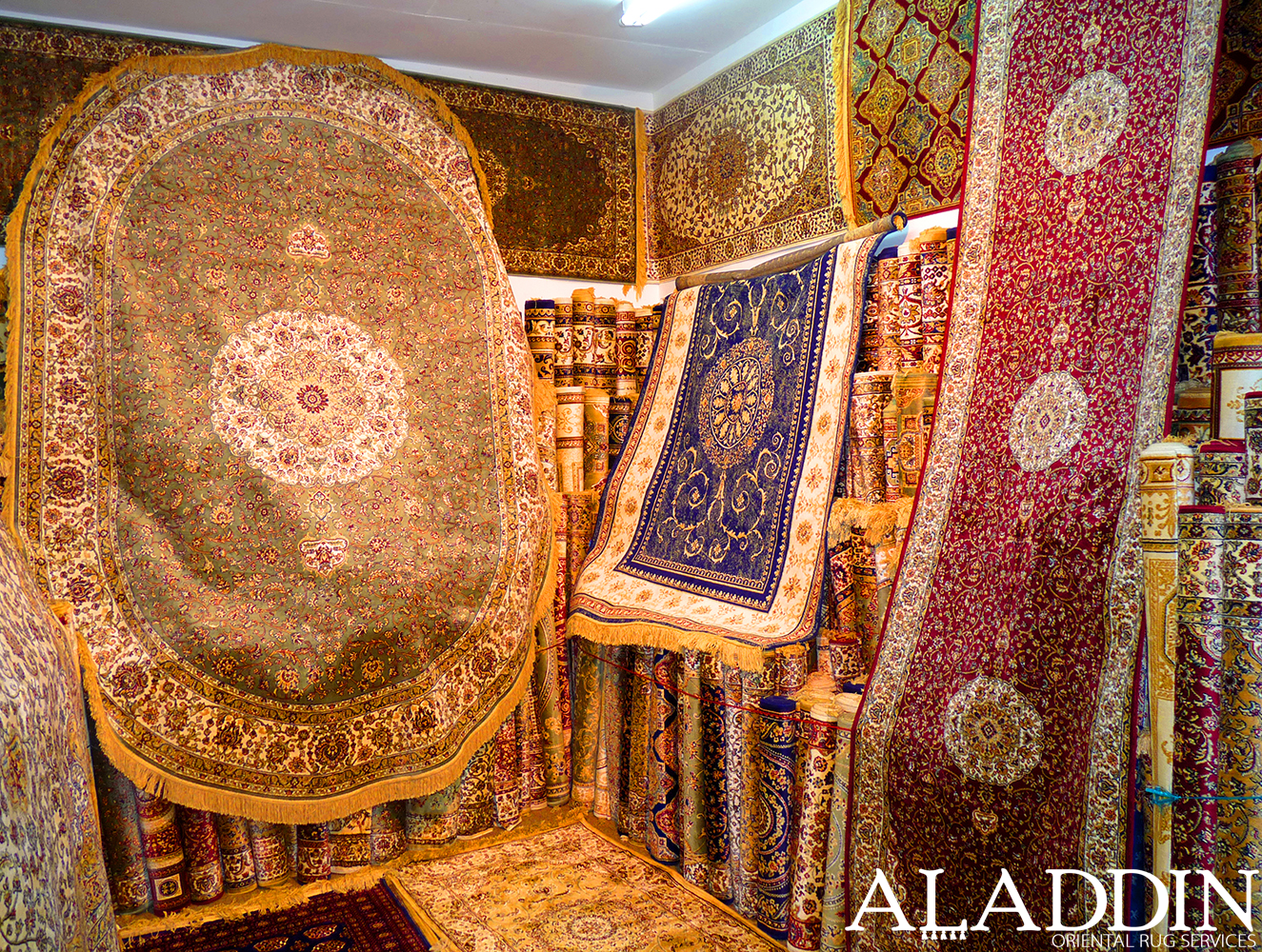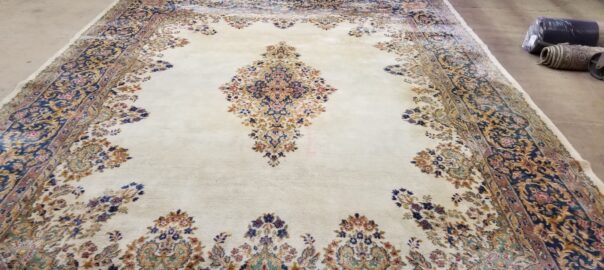
We can trace the path of history in the shifting weaves of a rug. Many rug’s designs tell the stories of the people that wove them – a great skill which is passed down through generations. Rug hand weavers must maintain vast knowledge and skills with various weaving techniques. There’s a vast array of different patterns and weaving techniques, from kilims to piled rugs. In this blog post, I’ll detail some of the different common weaving designs, and what defines them.
Hand Knotted Pile Rugs
These Rugs are a result of flatweave technique being deployed through adding knots onto the warps, each individual knot being cut before the next one is made (forming a pile effect.) After each row of knotting is completed, wefts are placed in and packed together to a level of desired rigidity. Two kinds of knots are used, the Turkish Double knot requires yarn to be looped around two warps and pulled tight in between them, while the Persian Single Knot requires yarn to be wrapped around a single warp, and placed behind the next-door warp before severing the cut.
Slitweaves
This, the most commonly used weaving technique, is often used to create geometric and diagonal patterned kilims. The slit describes the space made between two color blocks – made by reversing the weft around the final warp in a color portion, doing the same to the final wefts in the next-door color area. Weavers then make the weft very rigid toc over the warp, and usually work with diagonal patterns to keep the rug’s structure strong. One color block is completed before the next – resulting in very bold patterns with a very smooth surface.
Dovetailing and Interlocking
This technique refers to joining wefts from two separate color blocks, and moving them back in opposite directions around their shared warp – this technique allows wefts from next-door color areas to interlock between their shared warps – this allows for a more muted and restrained level of color contrast.
Sumak
This describes a technique where colored yarns are wrapped around warps in specific mathematical patterns that allow for very free floating complex arrangements that can be repeated throughout the rug’s surface. This technique takes much time and a vast amount of skill.
Brocading
This weaving method originates from the peoples of Anatolia, and involve adding extra patterns onto standard wefts that hold the main warp thread together. It creates the appearance of embroidery, with an embossed raised pattern.
Zili
This technique, also from Anatolia, creates a rough hewn appearance around the entire surface of the rug, in a manner that sort of resembles cords. Additional wefts are woven around the warps in mathematical ratios and snugged rigidly.



